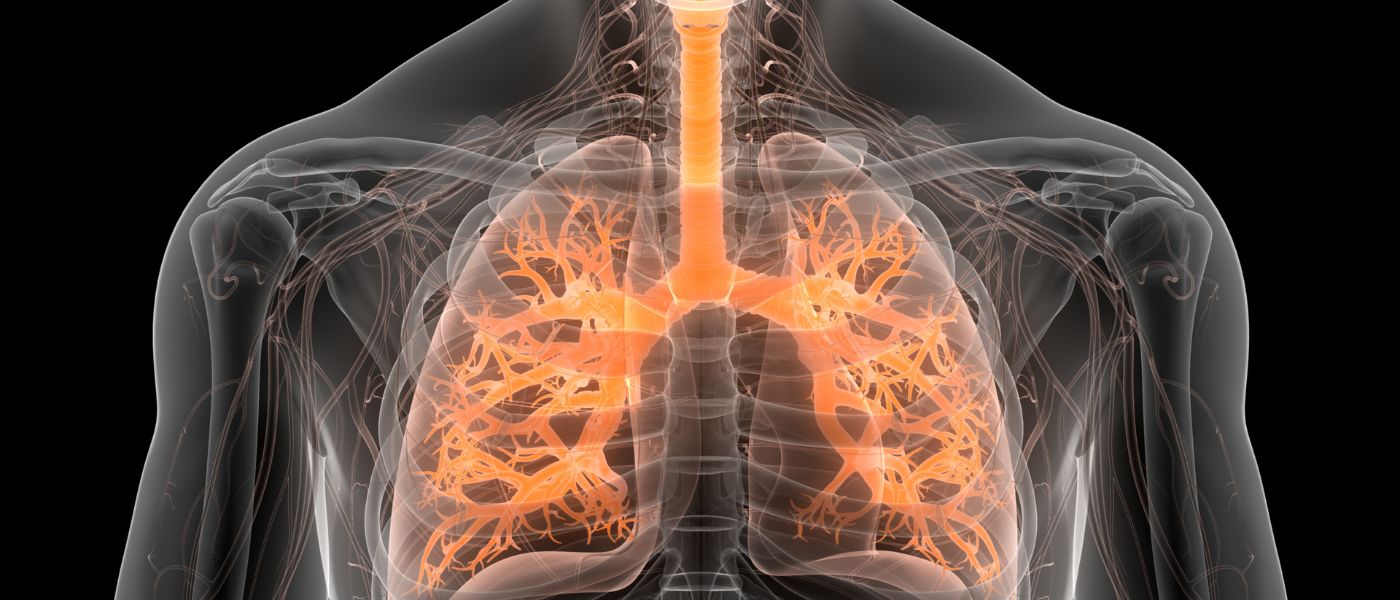When it comes to diseases such as cystic fibrosis (CF), gene editing—a process that alters the biological properties of cells—can be fundamental in driving treatment. But as promising as it is in lab settings, effectively reaching patients’ lung cells with such treatments has been challenging. The hurdle is so pervasive in therapeutic gene editing, it’s been dubbed “the delivery problem.”
Researchers have found a new approach to lung-targeted gene editing that could offer hope for people with CF in clearing this hurdle, according to findings published this summer in the journal Science.
A team of Case Western Reserve University researchers with the Cystic Fibrosis Mouse Resource Center (CFMRC) played a crucial role in the work, which was led by the University of Texas Southwestern. The CFMRC, part of the Department of Genetics and Genome Sciences at Case Western Reserve University School of Medicine, is the largest repository of CF mouse models in the world and had the expertise and resources needed for this study.
“For all these molecular therapies, where we’re trying to fix the gene or fix the protein, getting the repair machinery into the cells that you want in a living organism has been the biggest [challenge],” said Mitchell Drumm, Distinguished University Professor in the department and the Connie and Jim Brown Professor in Cystic Fibrosis Research.
To combat this challenge, the study’s principal investigator, UT Southwestern’s Daniel Siegwart developed small fat droplets known as lipid nanoparticles that can deliver nucleic acids (DNA or RNA) to cells in the body to correct mutations that cause disease. In the case of CF, these involve the gene CFTR, which affects how the body makes mucus and sweats, resulting in mucus build-up in organs and difficulty breathing.
Testing the efficacy of this delivery system in the CFMRC-provided mouse models proved critical. Drumm worked with Craig Hodges, the center’s director, and Ron Conlon, director of the Case Transgenic and Targeting Core Facility, to engineer mouse lines carrying the human gene that causes CF.
Siegwart’s team then worked with the CWRU team to apply their lipid nanoparticles and, critically, found this approach was able to reach stem cells—a significant achievement since most of the body’s cells turn over after a period of time and the cells that replace them come from stem cells. The ability to reach and treat stem cells, the forebears of future cells, may mean such therapies could be applied much less often than less targeted cell-correcting therapies.
A long history of CF research
The recent study on gene therapy published with UT Southwestern in Science is the latest example of a long-standing exploration into cystic fibrosis (CF) at Case Western Reserve University.
The Cystic Fibrosis Foundation recently renewed a four-year, $5.3 million grant that supports the CFMRC’s continued efforts to develop, characterize and distribute experimental mouse models to the CF research community—an important development as nearly 40,000 children and adults in the United States are living with CF, according to the National Institutes of Health. With the support of the grant, the team assists in experimental use of mouse models to gain better understanding of the pathophysiology of CF and ultimately develop therapies.
Hodges, also a professor in the Department of Genetics and Genome Sciences, is the lead principal investigator on the award. Major co-principal investigators include Conlon, Drumm and Tom Kelley, professor in the department.
While the CFMRC has spent more than two decades sharing CF mice and resources with the regional, national and international CF research community—reaching more than 374 investigators at 122 universities and 46 companies in 34 states and in 20 countries—it was officially established in 2019 with an initial four-year (2019-2023) $3.8 million grant from the Cystic Fibrosis Foundation. The grant included core facilities to support the work of the center: a production core (directed by Conlon), which handles the initial creation of the mice; a phenotyping core (directed by Kelley) in charge of characterizing each strain; and a distribution core, which manages breeding and distribution of the strains internally and externally to the CF research community.
In just the past five years, the center’s team has sent mice to 13 different countries, said Hodges, who directs the distribution core.
Drumm noted that CF mice require specialized care, which is why the CF foundation invested in the creation of the CFMRC, “so that every lab on the planet who wants to do CF stuff doesn’t have to learn that special husbandry,” he said.
The CFMRC team has given several of their models to other CF centers around the country to enable them to make their own CF mouse model cores internally, Hodges said.
“That way, we don’t have to ship them mice all the time… so they can distribute it to their local investigators,” he said, “but then if they ever need to come back or get more from us, then we’re always here for that.”
The Case Transgenic and Targeting Core Facility, also in CWRU School of Medicine, does extensive work with CF as well, injecting the CFMRC-engineered material into the single cell embryos to create CF mouse models, Conlon said. And this work helps to advance methods across other genetic conditions.
“What works for CF should work for other genetic diseases,” Conlon said. “So that’s sort of what the larger hope of gene editing is—whatever tools you find to deliver to the lung, deliver to the gut, it’s then just a simple modification to treat other diseases.”
The study, “In vivo editing of lung stem cells for durable gene correction in mice,” was published June 14 in the journal Science. Read the news release from UTSW.

